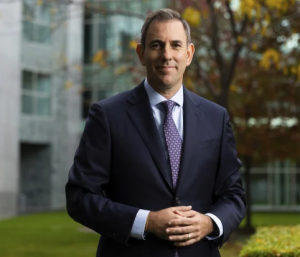 Written by Steve Michelson & Gordon Meredith
Written by Steve Michelson & Gordon Meredith
Labor’s last Budget before their 2025 election campaign begins was in many ways, an “everything budget, for everyone.”
Aimed at addressing the issues Australia is facing “here-and-now, but also for the decades to come” this Budget attempted to walk the tightrope between three competing objectives;
Continuing the “unavoidable spending” required to deliver essential services,
Offer cash-in-hand “cost of living” relief citizens and,
Buffer the economy against further inflation.
Despite some headlines reducing these measures as “brave” or “reckless”, the Labor government is forecasting a second surplus, (the first back-to-back surplus in nearly two decades) and forecasted reductions in inflation and debt for their forward estimates.
The 2024/25 Budget will act as a launching pad for the Albanese’s government’s attempt at re-election in 2025, and as such these budget papers not only outline what the Labor government is trying to achieve in the next financial year, but also what their key policies will be if given a new term in power.

Copies of the 2024/25 Budget paper are seen inside the Budget lockup at Parliament House in Canberra, Tuesday, May 14, 2024. Australian Treasurer Jim Chalmers will today hand down the 2024/25 Federal Budget. (AAP Image/Lukas Coch) NO ARCHIVING
Below is a summary of the Government’s key objectives and Budget commitments across major policy areas:
Future Made in Australia
 The keystone commitment in this year’s budget was a $22.7 billion investment into the much promoted ‘Future Made in Australia’ (FMIA) policy, with an aim to “help make Australia an indispensable part of the global economy”.
The keystone commitment in this year’s budget was a $22.7 billion investment into the much promoted ‘Future Made in Australia’ (FMIA) policy, with an aim to “help make Australia an indispensable part of the global economy”.
The FMIA policy, heavily inspired by the US Inflation Reduction Act and similar international initiatives, is a consolidation of previously announced measures and some new initiatives, most prominently the FMIA Innovation Fund.
The $1.7 billion FMIA Innovation Fund will support priority sectors, including renewable hydrogen, green metals, and clean energy technology manufacturing such as batteries. This funding will provide support for innovation, commercialisation, pilot and demonstration projects and early-stage development and will be focused on small and medium enterprises (SMEs) – rounding out the funding opportunities from the rest of the FMIA which had a focus on mass scale industry.
The funding is loaded into the latter stages of the decade, however, meaning that the FMIA policy is more of a signposting of what an Albanese Government would do, if they re-gain power at the 2025 election, not what they will try to legislate before sending votes to the polls next year.
Both sides of Federal politics agree, however, that collaboration between government and the business sectors will be required to execute the infrastructure projects required confirm Australia’s place in the modern ‘renewable’ economy.
What hasn’t been discussed as publicly are the challenges facing all future renewable projects, namely gaining local community support to build essential infrastructure often executed by unknown ‘outsider’ entities.
The Budget addresses the funding gap, and the stakeholder and communications puzzles remain.
Increasing Workforce Capacity
 Workforce capacity was one of the key issues highlighted in the Treasurer’s budget address, with the Government attempting to ““train the skilled workforce we need right across the economy.”
Workforce capacity was one of the key issues highlighted in the Treasurer’s budget address, with the Government attempting to ““train the skilled workforce we need right across the economy.”
With unemployment currently low, the Government has chosen to invest in apprenticeship initiatives to boost the uptake of skilled jobs, particularly those in the renewable energy and housing construction sectors.
The Government’s appetite and need for more trainees and training programs is seen in its continued (and increased) support for the Australian Apprenticeships Incentive Scheme (AAIS) as well as the expansion of New Energy Apprenticeships Program.
While the strategic review of the AAIS continues, incentives for priority list have been confirmed, and increased to $5000 in incentives for both employers and eligible apprentices, for the next four years.
The current Budget also continues the Labor Government’s focus on the provision of fee-free TAFE, with an additional 20,000 fee-free places offered by TAFEs and industry-specialist training providers in construction.
There is an opportunity, therefore, for training providers to reinforce how their programs can help provide the more advanced skillsets required to complete the Government’s complex infrastructure objectives.
Continued Reform of the NDIS
 As the cost of the NDIS continues to grow, there was increased nervousness about how severe the Government’s proposed cuts to the NDIS would be.
As the cost of the NDIS continues to grow, there was increased nervousness about how severe the Government’s proposed cuts to the NDIS would be.
The Budget outlined that reforms to the NDIS will curtail the scheme’s growth by $14.4 billion over the next four year, however this is dependent on the ‘Getting NDIS Back on Track Bill’ passing Parliament.
While the states last year agreed to work with the federal government on a reboot of the scheme, they have become increasingly outspoken about their financial exposure to its unknown costs.
As such, they have filed a joint submission to the Senate inquiry to outline their fears stating that the federal NDIS minister had not made clear who would be in or out of the scheme, nor which supports people would have access to, before he introduced new laws to parliament in March.
The bill is undergoing public hearings in the Senate this week.
Confirmed changes to the NDIS (and associated schemes) were headlined by the Disability Employment Services Reform with a “new specialist disability employment program to replace the Disability Employment Services program” as of July 1st, 2025.
Altering migration to address national issues
 The cost of living and housing availability crises were two major policy areas the Government tried to resolve with this Budget. A measure that was implemented to address both issues was a forecasted cap on international student enrolments.
The cost of living and housing availability crises were two major policy areas the Government tried to resolve with this Budget. A measure that was implemented to address both issues was a forecasted cap on international student enrolments.
The initial cap is yet to be finalised (with the proposed legislation to be introduced to Parliament in the coming week) but a “hard cap” will not be implemented. Instead, a proportional cap will be aligned to an institution’s ability to facilitate increased student accommodation. The predicted rise of student visa application fees was not implemented in this budget cycle, either.
These measures will assist in the Government’s aim to reduce the net overseas migration intake from 528,000 in 2022-23, to 395,000 in 2023-24, and a further reduction to 260,000 in 2024-25.
With the Government also focused on upskilling Australia’s current workforce, most permanent migration places (185,000) will be allocated to the ‘skill stream’ to “help address Australia’s long-term skill needs.”
Visa changes will also see the new National Innovation visa replace the current Global Talent visa, to drive “growth in sectors of national importance,” while the work experience requirement for the temporary skill shortage visa, will be reduced from two years to one.
Key Budget Takeaways:
 Spending pressures are currently the primary focus for this Government, and as such, all future submissions will need to address the “how” of a proposal, as much as the “why”.
Spending pressures are currently the primary focus for this Government, and as such, all future submissions will need to address the “how” of a proposal, as much as the “why”. - The Government is looking for tangible returns on their investments. Evidencing how a proposal could deliver benefits larger than their total funding and assist in avoiding accumulative costs will add robustness to your proposals.
- Many of the key issues facing the Government are inter-related (cost of living, housing security, employment stability, energy transition et al.). Offering a solution that not only addresses your organisation’s primary concern, but also assists in alleviating the pressure points faced by Government, will help to align your objectives with Government.
Further guidance on how to prepare effective Budget submissions can be found in one of our previous publications here.
If you would like further information on Government Relations or would like assistance with the communications surrounding your next Budget Proposal, please contact us here.

 Spending pressures are currently the primary focus for this Government, and as such, all future submissions will need to address the “how” of a proposal, as much as the “why”.
Spending pressures are currently the primary focus for this Government, and as such, all future submissions will need to address the “how” of a proposal, as much as the “why”.
